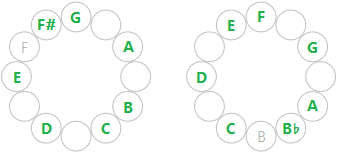

1.1. Piano keys are grouped—twelve at a time—into octaves.
1.2. The octaves are numbered 0 through 8 (the lowest and highest octaves are incomplete on the piano).
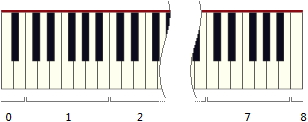
1.3. Each key sounds a tone with a unique pitch, or frequency.
1.4. The distance in pitch between neighboring keys is the smallest pitch-distance possible on a piano. It is called a semitone.
1.5. A distance of two consecutive semitones equals a distance of one tone.
1.6. The semitone and the tone are distances of (or differences in) pitch, or frequency. They are not musical distances (we will talk about musical distances later).
2.1. A scale formula is formed by selecting a number (typically five or seven) of the octave's twelve pitches.
2.2. The selected pitches are the degrees of the scale formula. A scale formula with seven degrees is heptatonic; a scale formula with five degrees is pentatonic.
2.3. The first degree in a scale formula is called the tonic. That is its technical name.
3.1. In the heptatonic major scale formula, the absolute distances between consecutive degrees are: tone, tone, semitone, tone, tone, tone. Consequently, a further semitone completes the octave.
3.2. The degrees of this formula are notated as 1, 2, 3, 4, 5, 6, and 7. The numbers convey more meaning than simply ordinal numbers, as you can see in the diagram below. "3" is the third degree of the major scale formula but, more than that, scale degree "3" is defined as being four semitones above the starting-point of the scale formula. In the same way, "1" is defined as being zero semitones above the starting-point. All of the degrees are defined as being so many semitones above/below the starting-point and above/below one another. The degrees of all other scale formulas are notated in terms of these degrees, as we'll see. The major scale formula is 1 2 3 4 5 6 7, and it is pronounced "one two three [...] seven".
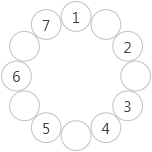
3.3. The technical names of the degrees in the major scale formula are: tonic (the first degree, 1), supertonic (the second degree, 2), mediant (the third degree, 3), subdominant (the fourth degree, 4), dominant (the fifth degree, 5), submediant (the sixth degree, 6), and leading-tone (the seventh degree, 7).
4.1. A scale is formed from a scale formula by making the degrees into notes. In a heptatonic scale, consecutive degrees are given alphabetically consecutive note names.
4.2. The notes can be thought of as the degrees of the scale, just like the technical names are the degrees of the scale formula.
5.1. The C major scale is formed from the major scale formula by making the tonic into the note C and the remaining degrees into the notes D, E, F, G, A and B.
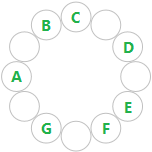
5.2. These seven notes, with the names A through G and the spacing of semitones and tones shown, are the natural notes. From them are derived every scale, every note, every chord and every composition in music.
6.1. Black and white piano keys are interleaved so that the natural notes fall on white keys.
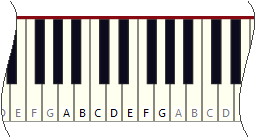
6.2. C4 (the C in octave 4) is known as middle C.
7.1. Seven of the twelve pitches of the octave coincide with a natural note, but any pitch can be given a note name that is an altered form of one of the natural note names.
7.2. For each semitone that you move up from a natural note to reach the pitch being named, add 'sharp' or a sharp symbol (♯) to the natural note name.

7.3. For each semitone that you move down from a natural note to reach the pitch being named, add 'flat' or a flat symbol (♭) to the natural note name.

7.4. The names C♯ and D♭ represent the same pitch but, because they are spelled with different letters, they are different notes. One pitch can represent more than one note, each note having a different spelling. When two note spellings coincide at the same pitch, they are known as enharmonic spellings.
7.5. If a pitch coincides with a natural note then it may be given the name of the natural note, optionally followed by 'natural' or a natural symbol (♮).

7.6. A note name that is not annotated as sharp, flat or natural is assumed to be natural.
8.1. In order to keep the rule that consecutive degrees in a heptatonic scale have alphabetically consecutive note names, it is frequently necessary to use note names containing sharps or flats.
